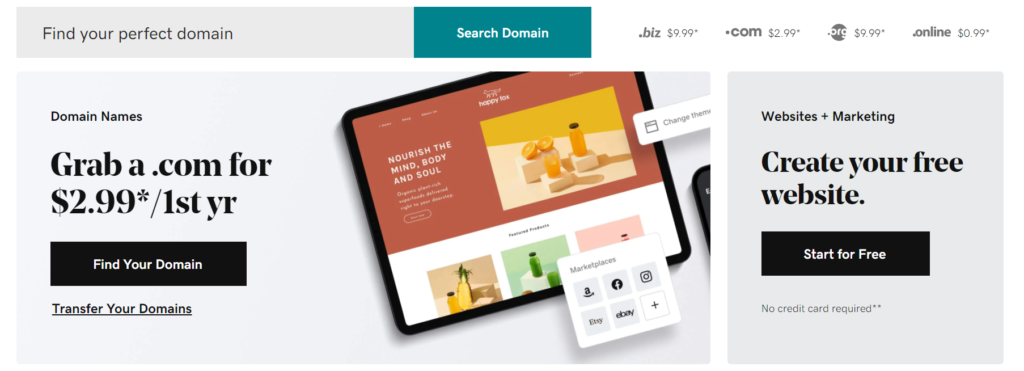Having a part-time business can introduce extra income and flexibility to your life. Whether you’re looking for multiple streams of income, you want to pursue a passion project, or you have a craving to flex your entrepreneurial muscles, a part-time business could be for you. People typically feel unsure about where to start, but with a few tips and tricks, it’ll be more clear than ever about how to come up with ideas for your future business and begin to implement them.
What is a Part-Time Business?
A part-time business can take many forms, but at its bare bones, it is a business that people work at less than the typical 40-hour-a-week day job. Anyone can have one, from retirees to stay-at-home parents to corporate employees. Often called “side hustles” these businesses allow people to have more creativity, financial freedom, and opportunity than ever before.
The Basics of Part-Time Business Ideas
So, now that you know all the background and benefits of having a part-time business, you may be wondering how to come up with an idea for your own. Let’s delve into some of the basic qualities that make the best part-time businesses.
It Solves a Problem
If you don’t take anything else away from this article, remember this: the best businesses work to solve a problem. While side hustles have many benefits for the entrepreneurs who start them, none of those perks will come to fruition if people are not being helped by the business.
Now, this doesn’t mean that the problem you solve has to be impossibly huge and daunting. Maybe you’ve noticed that people are having a difficult time explaining how viruses work to children in the age of COVID-19, like Valene Campbell who wrote a series of books about it. Or, you discovered that you can make high-quality, custom jewelry at a much lower rate than your competitors, like Alexis Jae. These people both had day jobs, noticed a problem, worked to solve it, and are now making hundreds to thousands of dollars a month from their ideas.
Ultimately, when coming up with your part-time business, it is crucial that it adds value to the life of your customer. Solving a problem will help your hustle thrive, and you can rest easy knowing that your business is making other’s lives easier.
Focus on Expertise and Passion
By thinking about catering your business to topics you are knowledgeable and passionate about, you will be able to better understand the problems of those communities.
To begin, ask yourself, what do I care about? What am I an expert on? These questions will allow you to think critically about the areas of life you are most familiar with and passionate about. Keep in mind that being knowledgeable doesn’t mean that it has to be related to any full-time jobs that you may have done in the past. It can be anything, from baking Challah bread to 3-D printing to LGBTQ+ books to facemasks.
Low Start-Up Costs
Spending money is always an option, but for beginners looking to start a part-time business, it can be wise to try some low-cost options first. There are a ton of great choices out there, no matter what kind of side-business you’re looking to start.
- WordPress – This is a fantastic choice for those just starting out with building their own websites. It is free to use (yes, free) and the setup is incredibly user-friendly. There is no coding on your part required, and it is very customizable. This means that you can make your website reflect your brand, as well as be indistinguishable from other websites using WordPress.
- Google Analytics – A free tool featured in our post about content marketing that allows users to better understand their business’s data. By using this, you’ll better understand what is and isn’t working for your business, and how you should approach marketing over time.
- Trello – This is an incredible organizational tool that is great for individuals looking to manage all of their tasks in one place. Users can also collaborate with others, so if you ever decide to grow your team, Trello can grow with you and aid with remote collaboration.
These are just some of the most common fan favorites to get your entrepreneurial feet wet. Some side hustlers stick with them for years, while others reinvest their profits into buying higher-end versions of these products that cost a little more.
3 Tools to Improve Part-Time Businesses
Once you have your idea, try implementing some of these resources in order to get your new part-time business to start garnering traffic and customers.
Facebook Ads
Facebook ads are one of the best marketing tools to use to start getting traffic to businesses. They are incredibly user-friendly, whether or not the person using them has had experience with marketing. Facebook ads are simple to set up, and it comes with a variety of benefits. For example, Facebook provides analytics for their users, so when you publish your advertisements you’ll be able to see metrics about your weekly reach, post engagement, page likes, and which of your ads receive the most engagement. Facebook also walks users through the process of creating an ad, and helps people determine the right choice for their business goals.

Not only that, but Facebook ads also allow users to target their exact audiences. When you publish your ads, you can select the interests, behaviors, demographics, age ranges, connections, locations, and languages of the people you want to attract. This way, you know that your product will be shown to your ideal audience.
All of these features come at a relatively affordable price. Rather than having a set rate for ad space, the company allows users to submit bids. On the website, it says that it wants to make sure that people can buy ads no matter what their budget looks like. Some users spend as little as $1 a day to use the service.
Shopify
When it comes to e-commerce businesses, Shopify is an excellent choice for beginners. The program is incredibly user-friendly, and allows people to set up their websites with just a push of a few buttons. With its ease of use, it helps users avoid the complexities and costs of self-hosting platforms.
Shopify has strong SEO capabilities, as well as many different kinds of integrations for users to implement, including Google Ad Campaigns. It also includes analytic information, allowing you to see how people are discovering your website and which marketing techniques you should invest more time and money into.
Shopify also has quite a few additional benefits, with 24/7 customer support, a strong mobile version, and high-quality security, including data encryption, for your customer’s payment data.
Chatfuel
Chatfuel allows users to build a chatbot for your business’s Facebook page with no code. It is incredibly user-friendly, and even includes a drag and drop builder. By using Chatfuel, your website will have an extra layer of credibility, and you’ll be able to quickly communicate with your customers about their most common questions.

If that wasn’t enough, Chatfuel is one of the most affordable chatbot builders out there. It has a free plan for up to 50 users, and if your business grows beyond that, the other plans cost about $15 a month. It’s one of the best of the best – at least Netflix, Adidas, and Visa seem to think so.
3 Tricks for Part-Time Business Ideas
Buy a Domain Name
When you’re ready, try to buy your own domain name for your business. While there are some free options, having a clean, simple domain name will take your professionalism and credibility to the next level. Plus, you can buy most domain names for under $10 a year, and sometimes as low as $2.99.

There are quite a few places where you can purchase a domain name, but the most user-friendly experience I have had is through GoDaddy.com. Customers can look up the domain names they are considering and compare prices easily. Not only that, but once you purchase the domain you can easily link it to your WordPress account. In addition, web hosting through GoDaddy usually costs between $6 and $13 a year, which is as much as a few cups of coffee.
Learn From Others
In recent years, the idea of side hustles has garnered a ton of attention globally. There are all kinds of resources available, from books to podcasts and more. One of the best tools you can implement quickly is delving into some of them.
- Side Hustle School Podcast by Chris Guillebeau – this is an excellent resource for current and future side hustlers to gain inspiration, knowledge, and community. Side Hustle School is a daily podcast that features a variety… They feature stories of successful part-time businesses, highlight pitfalls and how to avoid them on Failure Fridays, and even Q&As with the host about all kinds of topics, from how to offer discounts to customers to how to become a travel agent. The best part? It’s free to listen to and the episodes are almost always under 10 minutes, give or take.

- What If It Does Work Out? by Susie Moore – this book is perfect for those who feel intimidated by the idea of starting a side business. Moore challenges her readers to reframe the question of “what if it doesn’t work out?” and shows her audience how to best harness their skills to create their side-business.

- Spend time on blogs centered around side hustles. Websites like Side Hustle Nation and Millennial Money Man are epicenters of knowledge about part-time businesses and can help you get to know others in the community, as well as explore a wealth of other tried and true resources.
Investing your time into exploring these resources takes very little time every day, and you’ll get exposure to all kinds of different ideas and tools that could spark inspiration and community.
Be Consistent
While this tip is a bit more conceptual than the others, it is just as important. There is a reason that the phrase “consistency is key” has become a cliche – because it’s true and very important.
When it comes to engaging your audience and building up a customer base, there is nothing more important than regularly engaging with your patrons. If you start strong with posting on a blog, creating products, engaging in social media, or releasing podcast episodes, then suddenly drop off, your new audience will likely forget about you. Not only that, but it makes your product and voice seem less credible.
It is always important to take breaks if necessary, but inform your audience and don’t leave them high and dry. Ultimately, get ready to do the hard, consistent work upfront. Eventually, the income may become passive, but not without commitment in the beginning.
What to Do Next
More than anything else, just start. Try something, even if you’re scared. The only way that it will become less daunting is by dipping your toes in and learning what the world of entrepreneurship is really like. The steps don’t have to be complex or time-consuming. Small, frequent actions, like creating a WordPress to familiarize yourself with the platform or listening to a 10-minute episode of Side Hustle School are great steps to get more comfortable with entrepreneurship.
Take ten minutes to write a list of topics you are interested in or passionate about. From there, spend time listening to when people complain, or when you feel frustrated, and see if there is a way that you can solve a problem for yourself and others. Pay attention to the gripes of people in your communities, and find a way to help them.
Over time, potential business ideas will be able to emerge through the cracks, and from there you can work to make them a reality. For some more inspiration, check out our recent post about online business ideas.
Once you have your idea, consider trademarking your business, especially once it gets bigger. Learn more about whether a trademark could be right for you and how to request one by reading our step-by-step guide.


